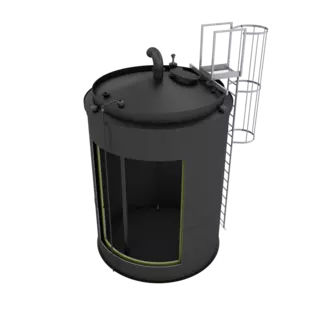With phosphate elimination by physico-chemical precipitation, dissolved phosphates are converted into undissolved phosphates and removed from the wastewater as solid matter. Mostly iron salts are used as precipitants, among others iron chlorides (FeCl2 or FeCl3), iron chloride sulphate (FeClSO4) or iron(II) sulphate (FeSO4) as well as polyaluminium chloride (PAC), sodium aluminate and aluminium chloride.
The precipitants are themselves hazardous to water, so measures for leakage detection and prevention of uncontrolled leakage are mandatory.
Phosphate elimination can be technically implemented in different ways. Each process has specific advantages and disadvantages.
simultaneous precipitation: improvement of plant operation
pre-precipitation with downstream biological stage: Frequently to the discharge into the years of come purification plants, as durable solution not always meaningfully
precipitation: Very good phosphorus run-off values with high precipitant consumption





